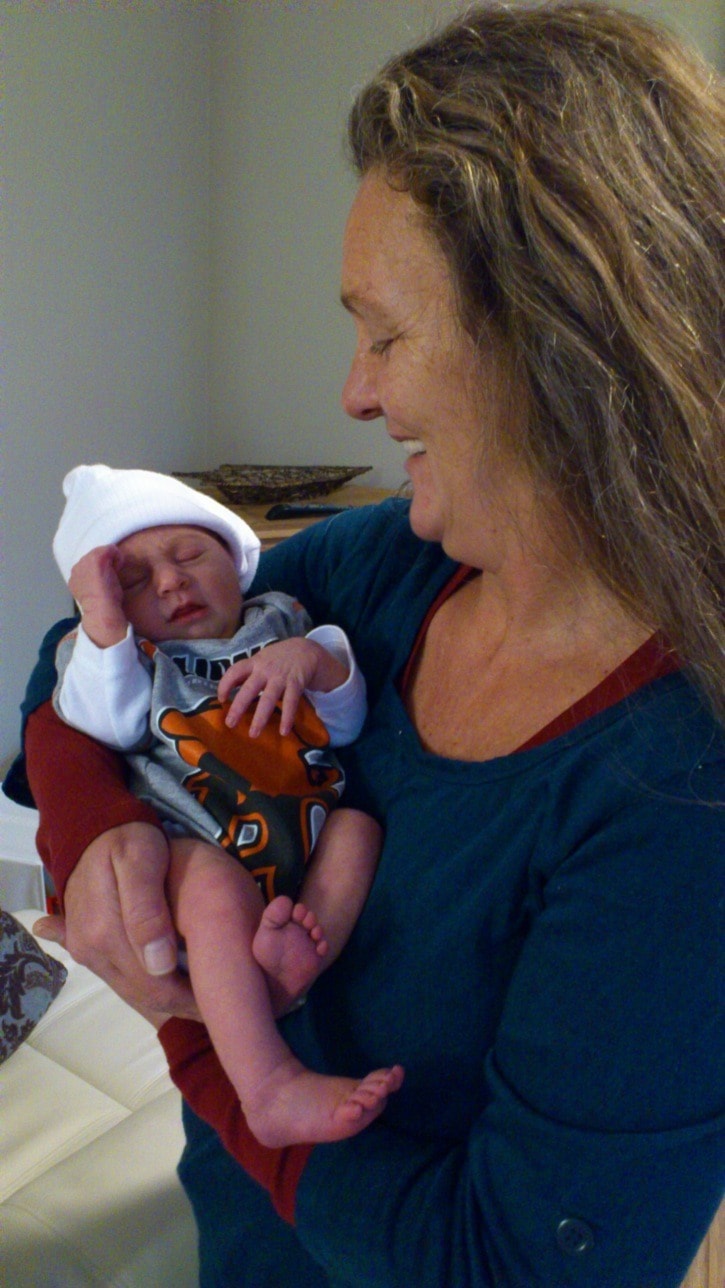Although awareness of midwifery is still developing in Canada, a local practice has seen more and more expectant parents walk into its doors.
Uta Herold, a registered midwife with over 30 years of experience, opened Sooke Midwifery in October 2011. And despite being relatively new, the practice has seen an increase in clients over the years, which Herold attributes to “word of mouth.”
In 2012, she presided over the birth of 40 babies from Sooke. In the same year, Sooke residents made up 80 per cent of her clients, which she expects to increase to 90 per cent in 2013.
“They realize that [midwives] are part of the medical system, like an integrated part of the medical system in B.C., and therefore, they say, ‘Well then, I haven’t really had this individualized care with my doctor the first time, but this time I would really like to do that,’” Herold said.
Sooke resident and mother-of-two, Crystal Herie, is one of those women.
The delivery of her first child involved a significant amount of medical intervention, which resulted in a c-section delivery.
“There was a lot of medical intervention, I got induced and I wasn’t told… how much it heightens the chance of having a c-section,” Herie said.
“Your chance of having a c-section goes up 50 per cent when you get induced because you’re body’s not ready. And once you get to the hospital and they start doing things to you, you’re kind of on a time limit. They’re not going to let you go four or five days after being induced before you have your baby.”
The experience led Herie to do more research, and for the birth of her second child, she contacted Herold.
She ended up delivering her second child in hospital naturally.
“I ended up having him naturally at the hospital without medicine or anything, and I knew it could be done. The difference between the two births was just so polar opposite,” Herie said.
She is now in training to become a doula to provide support and help parents navigate through the labour process.
Although midwifery is slowly growing in prominence, Herold said there are still misconceptions that it is not regulated or medicalized, which is opposite from the truth.
Midwives are health care practitioners who specialize in low-risk pregnancy, child birth and postpartum.
The health care profession was regulated and implemented into the medical system in 1998, and
is covered by the B.C. Medical Services Plan (MSP).
“The maternity care that we provide is basically the maternity care a doctor provides,” Herold said. “With all the tests, ultrasounds, blood tests and whatever maternity care is outlined by the guidelines here in B.C.”
Midwives also monitor the mother and baby for complications like gestational diabetes and high blood pressure. In the event of a problem, they refer to obstetricians and specialists.
Herold said the main difference between doctors and midwives is time.
“We don’t have to take care of any other patients, we can afford to provide that individualized care,” she said. “They want to be treated individually, they want a care provider having time for them, and this is something that we can guarantee.”
Midwives hold longer appointments with their clients, and also act as the primary care provider for parents throughout the pregnancy, labour and birth. They also offer comprehensive prenatal and postnatal care, and make home visits for up to 12 days after the birth. And despite popular belief, most births by midwives occur in hospital rather than at home.
“A normal labour and birth, in my opinion, can really happen everywhere,” Herold said. “The most important thing is really having a professional care provider who detects any risks.”
